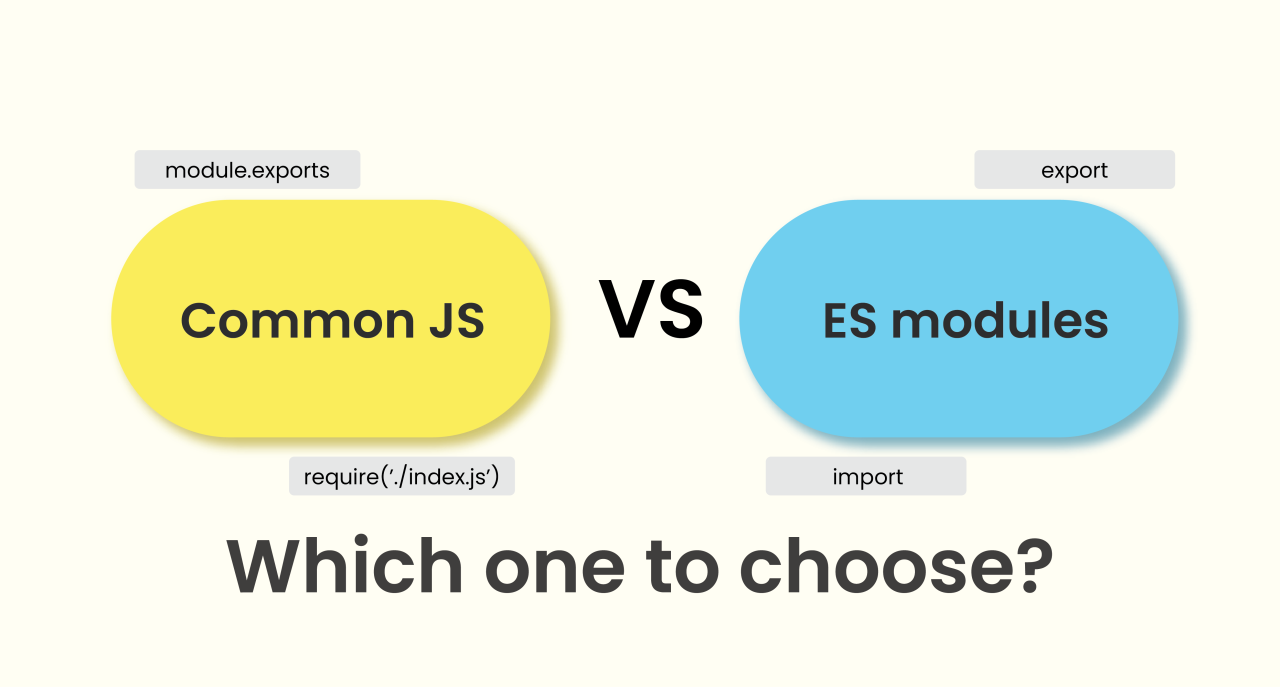CommonJS (CJS) and ES Modules (MJS) is two different way to organize code that help reuse code.
CommonJS (CJS)
- Use
requireto load,module.exportsto export - Use in NodeJS
- Synchronous Loading suitable with backend side
- May cause performance issues if load large modules (because it's synchronous)
- Widely supported in Node.js, but less compatible with browsers (without bundlers).
- When to choose CJS? => old Node.js projects
- Build into *.cjs files
ES Modules (MJS)
- Use
importto load,exportto export - Use in Modern Javascript environment (brower or NodeJS with
"type": "module"in package.json) - Asynchronous Loading suitable with frontend side
- Native support in modern browsers and Node.js (from version 12+)
- Allow static analytic, tree shaking and more efficient bundling.
- Directly support by modern browser but require transpilation and bundling for legacy browser support.
- When to choose MJS? => new Node.js projects or frontend projects
- Build into *.mjs files
What is the order if you have CJS and MJS in the same file?
import { createRequire } from "module"; const require = createRequire(import.meta.url);
require('./file1.js') import './file2.mjs' import './file3.mjs'
function getModule() { import('./file4.mjs') require('./file5.js') }
getModule()
// file1.js
console.log("file1.js")
module.exports = {}
// file2.mjs
console.log("file2.mjs")
export default {}
// file3.mjs
await new Promise((res) => setTimeout(() => res(), 0))
console.log("file3.mjs")
export default {}
// file4.mjs
console.log("file4.mjs")
export default {}
// file5.mjs
console.log("file5.js")
module.exports = {}
answer is: 2 3 1 5 4
